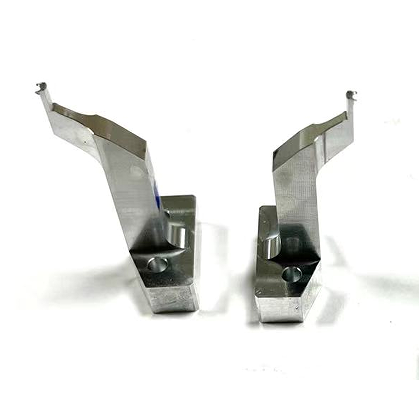Precision CNC Maching Aluminum Al7075
- Material: Al7075
- Method:CNC 5-axis machining, CNC drilling, Welding, Grinding
- Machining Process: raw material →CNC 5-axis machining → Welding→ Grinding
- Testing tools and equipment –Three-coordinate, Height gauge, profile projector
- Equipment used–5-axis CNC machine
- Features: This workpiece is a component used in medical products. The verticality of the workpiece is 0.01, the flatness is 0.01, and the CNC molding section tolerance is according to ISO2768.
- Packing –5-layer corrugated paper outer box + bubble bag + pearl sponge
- Application fields: Automotive, Automation, Test systems, Sensors, Medical, Sports, Consumer, Home appliance, Electronic, Pumps, Computers, Power and energy, Architecture, Printing, Food, Textile machinery, Optical, Lighting, Security and safety, AOI, SMT equipment, etc
Description
What’s 5 axis CNC
In five-axis CNC, the term “five axes” refers to the ability of the machine tool to move and position the cutting tool or workpiece along five different coordinate axes during the machining process. These five axes typically include three linear motion axes (X, Y, Z axes) and two rotational motion axes (A, B, or C axes). Compared to traditional three-axis CNC machining, five-axis CNC allows operations to be carried out from multiple angles simultaneously, making the machining of complex parts more precise and efficient.
In five-axis CNC machining, in addition to the three basic linear axes (X, Y, and Z), the machine also has rotational motion along the A and B axes. This enables more complex cutting actions, such as performing precision machining from multiple directions without the need to reposition the workpiece. Five-axis CNC is capable of machining complex geometries and is widely used in industries such as aerospace, automotive, medical, and mold manufacturing, particularly for parts requiring high precision and intricate shapes.
What are the advantages of five-axis CNC?
Five-axis CNC offers several advantages, mainly including the following:
- Strong capability for machining complex surfaces: Five-axis linkage allows the tool to approach the workpiece from various angles and orientations in space, enabling the precise machining of parts with complex surfaces, such as aircraft engine blades and impellers, which traditional three-axis machines cannot achieve.
- Higher precision: It reduces the number of clamping operations, eliminating positioning errors caused by multiple setups, thereby improving machining accuracy. Additionally, the tool can adjust its posture according to the shape of the surface, maintaining the optimal cutting angle and cutting force, further enhancing machining precision and surface quality.
- Increased machining efficiency: By machining multiple surfaces in a single setup, it reduces machine standby time and auxiliary time. Five-axis CNC can complete the machining of complex parts more quickly.
- Optimized tool path: The control system can plan more rational tool paths, preventing interference between the tool, workpiece, or fixture, while ensuring uniform tool wear, extending tool life, and reducing machining costs.
- Reduced labor costs: Although there are higher requirements for operators and programmers, once the programming and debugging are completed, the machine can automatically finish the machining of complex parts, reducing human intervention, and thereby lowering labor costs and physical labor intensity.






